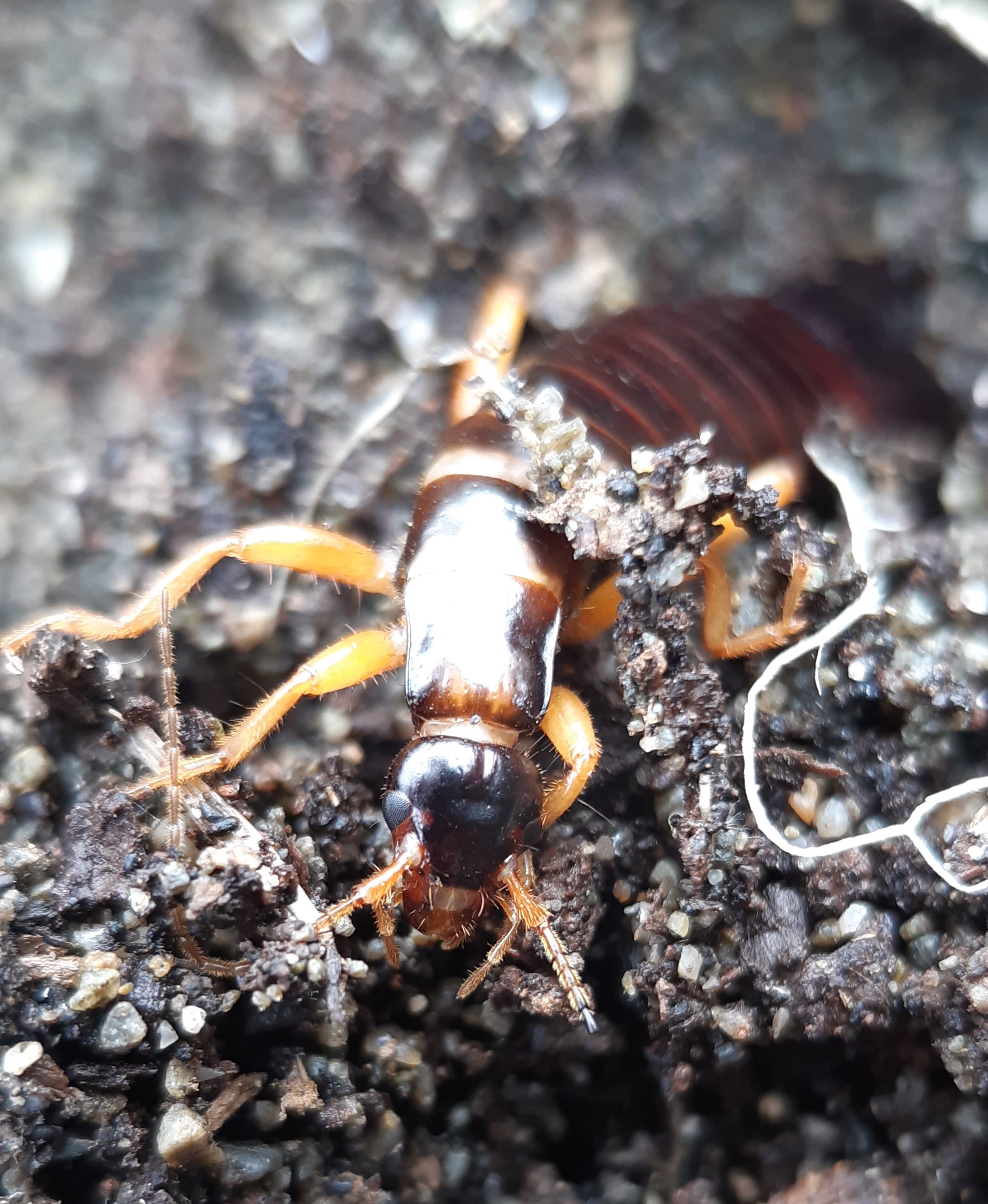Seashore Earwig on:
[Wikipedia]
[Google]
[Amazon]
 The seashore earwig (''Anisolabis littorea'') is a species of earwig in the family
The seashore earwig (''Anisolabis littorea'') is a species of earwig in the family
 The seashore earwig (''Anisolabis littorea'') is a species of earwig in the family
The seashore earwig (''Anisolabis littorea'') is a species of earwig in the family Anisolabididae
Anisolabididae is a family of earwigs, in the suborder Forficulina and the order Dermaptera. It is one of nine families in the suborder Forficulina, and contains thirty-eight genera spread across thirteen subfamilies.
Subfamilies
The family cont ...
. The species was first described in 1846 by Adam White.White, A. 1846. Zoology of Voyage of H.M.S. Erebus H.M.S. Terror and under the command of Captain Sir James C. Ross, during the years 1839 to 1843. London : E.W. Janson Vol. 2 27 pp. pl. 6 4 This species has a blackish-brown body with brown-yellow legs. It has two light brown spots on its head, close to the inside of each eye. Its abdomen is widest at the seventh segment. It is flightless.
It is native to eastern Australia and New Zealand. Similar both ecologically and taxonomically to the maritime earwig, this species is commonly found on beaches under stones and debris. It is a carnivore, feeding on millipedes, flies, and isopod
Isopoda is an order of crustaceans that includes woodlice and their relatives. Isopods live in the sea, in fresh water, or on land. All have rigid, segmented exoskeletons, two pairs of antennae, seven pairs of jointed limbs on the thorax, an ...
s such as woodlice. Like most other earwigs, the females care for their young during development, and the larva go through five instars before becoming adults. The species also has a negative phototaxis, meaning that it tends to move away from a light source. See also
* List of Dermapterans of AustraliaReferences
Anisolabididae Insects of New Zealand Insects of the Philippines Insects described in 1846 {{Earwig-stub